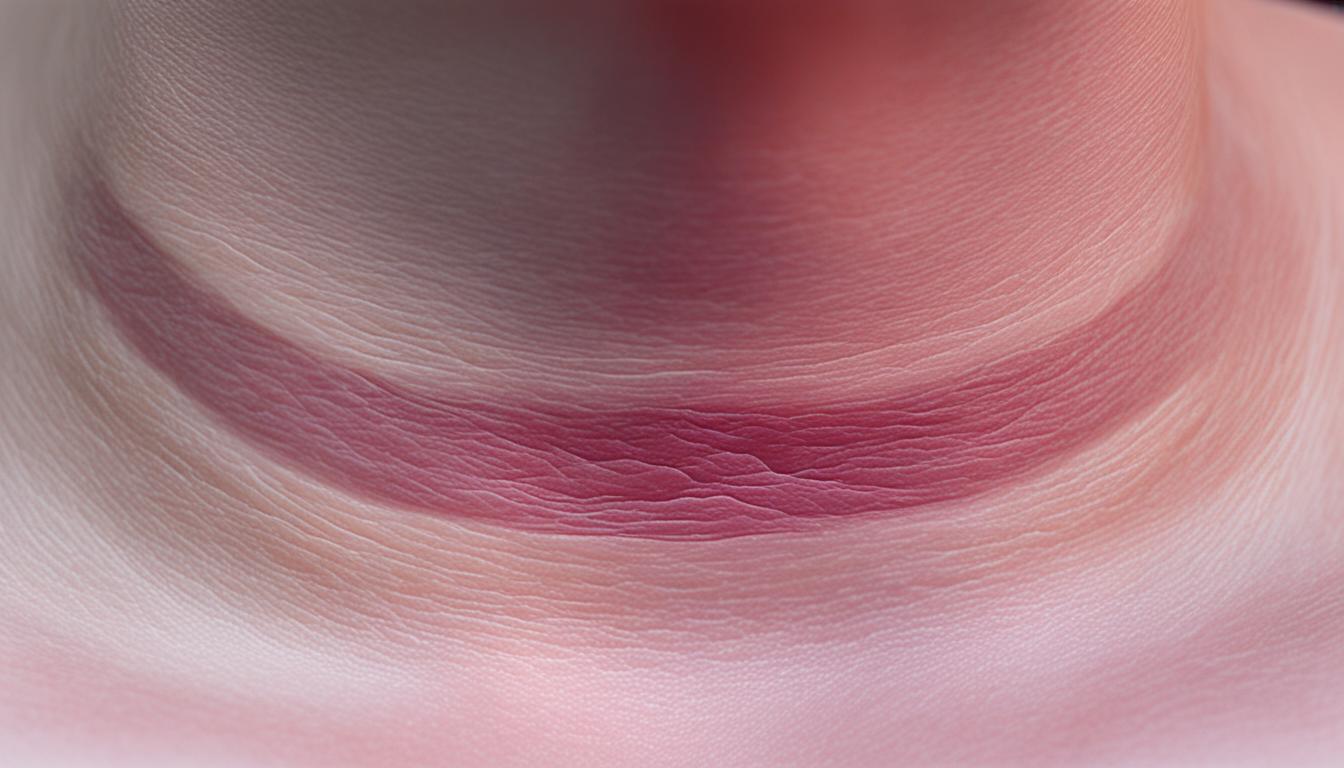Hashimoto’s thyroiditis leads to hypothyroidism, affecting about 2% of people each year in developed parts of the world. It causes the thyroid gland to enlarge, and more women get it than men. It often runs in families. The main reason for this disease is problems with the immune system. This causes the thyroid gland to become inflamed and swell.
Being a woman and between 30 and 50 years old raises your risk for Hashimoto’s thyroiditis. Having family members with thyroid or autoimmune diseases, or having autoimmune disease yourself, also increases your risk. Symptoms include gaining weight, feeling cold all the time, being tired, having trouble going to the bathroom, feeling changes in mood, and experiencing pain or loss of hair.
Doctors diagnose Hashimoto’s thyroiditis by looking at your medical history and doing a physical exam. They also do an ultrasound of your thyroid gland. Blood tests check your levels of thyroid-stimulating hormone and find antithyroid antibodies. Treatment often involves taking medicine for life to keep your thyroid hormones at the right level. But this doesn’t cure the disease.
Stem cell therapy is showing potential in treating Hashimoto’s thyroiditis. Mesenchymal stem cells might help by reducing inflammation and keeping the thyroid tissue safe. This promise comes from the cells’ ability to help with inflammation and regulate the immune system.
Key Takeaways
- Hashimoto’s thyroiditis is the most common cause of hypothyroidism, primarily inducing an enlarged thyroid gland.
- Women are ten times more likely to develop Hashimoto’s thyroiditis compared to men.
- Abnormal immune system activity is the leading cause of this condition, resulting in inflammation and swelling of the thyroid gland.
- Common symptoms include weight gain, constipation, cold intolerance, chronic fatigue, mood changes, joint and muscle pain, hair loss, and hoarseness of voice.
- Diagnosis involves a thorough medical history, physical examination, ultrasound examination, and blood tests.
- Treatment usually involves lifelong hormone replacement therapy, while stem cell therapy shows promising potential in reducing inflammation and protecting thyroid tissue.
Causes and Symptoms of Hashimoto’s Thyroiditis
Hashimoto’s thyroiditis is an autoimmune disease that targets the thyroid. It’s when your body’s defense system attacks the thyroid, causing it to get inflamed and swell. This disease is more common in women and can run in families.
No one knows the exact cause of Hashimoto’s. Experts think it’s a mix of genes and things we’re exposed to. When the immune system attacks the thyroid, it works less well, leading to hypothyroidism. This can cause many problems.
One big sign is putting on weight. The disease slows your metabolism because of hormonal changes. Other signs include not being able to go to the bathroom easily, feeling cold a lot, being constantly tired, mood swings, hurting joints, losing hair, and having a scratchy voice.
Sometimes, it makes the thyroid get bigger, forming a goiter in your neck. A goiter can make you feel bad and look different.
Remember, symptoms of Hashimoto’s can differ a lot. Some may have few signs while others face serious issues. If you think you might have it, see a doctor. They can give you the right diagnosis and help you find the best treatment.
Key Points:
- Hashimoto’s thyroiditis is an autoimmune disease that affects the thyroid gland.
- It is characterized by abnormal immune system activity, inflammation, and swelling of the thyroid gland.
- The exact cause of the disease is unknown, but it is believed to have both genetic and environmental factors.
- Common symptoms include weight gain, constipation, cold intolerance, chronic fatigue, mood changes, joint pain, hair loss, and hoarseness of voice.
- Hashimoto’s thyroiditis can also cause the thyroid gland to enlarge, resulting in a goiter.
Diagnosis and Treatment of Hashimoto’s Thyroiditis
Diagnosing Hashimoto’s thyroiditis involves a comprehensive approach. It includes detailed medical history, physical examination, and ultrasound. These steps help confirm this condition and rule out other causes of thyroid issues.
For the medical history, the provider asks about symptoms and family health. They check for past autoimmune problems. This info is key for further checks.
Next, the provider may feel the thyroid for nodules or swelling. They look at the thyroid’s size, shape, and texture closely.
An ultrasound checks the thyroid’s structure for issues like nodules. This test is important for diagnosing Hashimoto’s.
Blood tests are crucial. They measure TSH levels and look for antithyroid antibodies. High TSH and these antibodies point to Hashimoto’s.
Hormone therapy is the main treatment. Taking synthetic thyroid hormone helps when your thyroid can’t make enough. It balances your hormone levels, easing symptoms.
Stem cell therapy is being studied for Hashimoto’s. Mesenchymal stem cells may ease inflammation and protect the thyroid. But, more studies are needed.
| Diagnosis and Treatment of Hashimoto’s Thyroiditis | |
|---|---|
| Diagnostic Methods | Treatment Options |
|
|
Currently, hormone therapy is the go-to for treating Hashimoto’s. But, stem cell research offers hope for new, better treatments in the future.
Advances in Stem Cell Therapy for Hashimoto’s Thyroiditis
Stem cell therapy is a hot topic for treating Hashimoto’s thyroiditis. It’s been found that mesenchymal stem cells can decrease inflammation and protect the thyroid.
To treat Hashimoto’s thyroiditis, stem cell therapy has a specific process. This method includes checking the patient, taking cells like fat tissue or blood, growing more cells in a lab, and then giving those cells back to the patient through a vein.
After being given to the patient, these stem cells do something amazing. They follow the body’s signals and head straight to the thyroid. There, they calm the immune system, lower inflammation, and help the thyroid heal itself. This method might be better than using hormones and could help patients with Hashimoto’s thyroiditis a lot.

